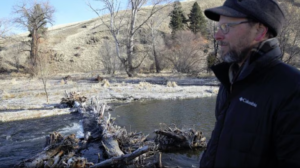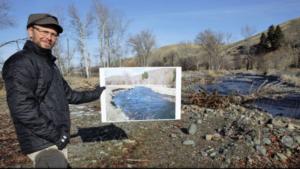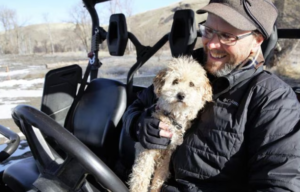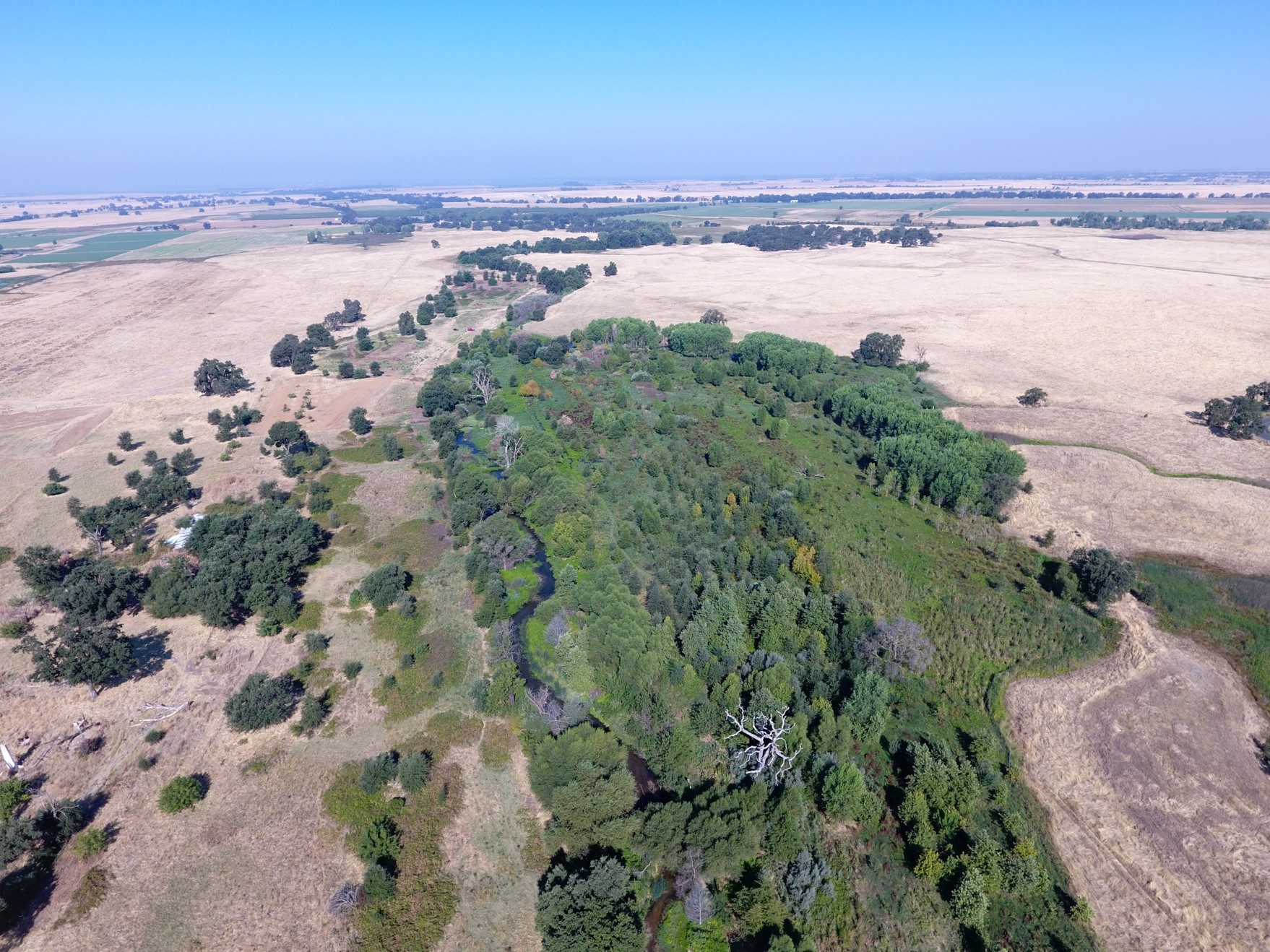This report is a fine reminder that no matter how well intentioned you are or how much money you have, its a good idea to bring your neighbors along with your project from the very beginning. Whether that means having a barbecue or hosting fieldtrips or just answering phone calls. It takes a neighborhood to save a stream.
Animals and neighbors warm to Wallowa River restoration project
 One of Ian Wilson’s greatest joys is going down to the short stretch of the Wallowa River on his family’s ranch to fly fish.
One of Ian Wilson’s greatest joys is going down to the short stretch of the Wallowa River on his family’s ranch to fly fish.
“For me, it’s the equivalent of … church for someone who is deeply religious,” he said.
But as a fish biologist, he’s also long known there was something off about the river as it cut across his property: The Wallowa was oddly, unnaturally straight. And because of that, it wasn’t very hospitable for fish. Rather than stop and spawn, salmon and steelhead tended to swim through the property.
Salmon like clean, shallow gravel beds to lay eggs. And smolt, or baby salmon, prefer lots of little still-water pools where they can relax and fatten up on insects. Basically, they need the kind of meandering river system that naturally occurs in a floodplain.
Over the years, Oregon’s farmers, road builders and developers cleared many of the state’s floodplains by cutting trees and filling in channels. Doing so maximized their ability to use land.
All those neighbors didn’t take too kindly to that stream stuff undoing all their hard work. But not everyone is privy to the stream of thought that can see what a river should be. Fortunately he just kept right on working.
 But now, because Chinook, steelhead and trout are listed under the Endangered Species Act, the Bonneville Power Administration is trying to rebuild floodplains using revenue from electricity generation.
But now, because Chinook, steelhead and trout are listed under the Endangered Species Act, the Bonneville Power Administration is trying to rebuild floodplains using revenue from electricity generation.
With help from the nonprofit Trout Unlimited, Wilson won a $1.2 million BPA grant to restore his three-quarter mile stretch of river.
In the summer of 2022, crews placed 475 trees, many complete with massive root wads, in the channel to slow water down and spread it out. They built 54 artificial beaver dams to hold water in the floodplain and create lots of little stillwater pools. And they planted cottonwood, willow and alder trees for shade.
Considering the aim was to restore the river to a more natural state, the restoration was a relatively industrial project, with excavators and dump trucks. They dug channels and filled-in deep river pools.
Wilson said the work vastly increased fish spawning habitat. It used to take him 45 minutes to look for salmon eggs in the river, “Now it takes me upwards of half a day, because there’s so much water to walk,” he said. “Same flows, but there’s just so much more area to cover.”
The restoration finished in September and lots of new animals have already shown up. Where Wilson used to see 10 ducks, he said there are maybe 100 now. He’s also spotted bald eagles, dragonflies and songbirds.
“Within two months, we had beavers return, which was beyond my wildest expectations,” Wilson said. “We’ve seen a black bear recently. We just saw a bobcat this last Sunday and there’s a lot of coyotes out.”
Beavers? Did you say you got BEAVERS? Wow that’s really lucky! And please tell me you aren’t so crazy as to think they’ll block all the salmon and decided to have them trapped out, right? So far so good.
 It’s an environmentalist’s dream. But this is eastern Oregon, where endangered species listings have hurt local economies in the eyes and experiences of some residents. Land used for chinook salmon, the gray wolf, the Oregon spotted frog and other animals cannot easily be used for logging, mining or grazing, limiting economic activity.
It’s an environmentalist’s dream. But this is eastern Oregon, where endangered species listings have hurt local economies in the eyes and experiences of some residents. Land used for chinook salmon, the gray wolf, the Oregon spotted frog and other animals cannot easily be used for logging, mining or grazing, limiting economic activity.
And unlike many of his neighbors, Wilson is not reliant on his ranch income because he and his wife have other jobs. So he said when he gets the odd sour look at the grocery store he understands why, ”You know people give me a hard time,” he said. “And you just have to kind of accept that I guess, to some level.”
In hindsight, Wilson thinks he could have contacted more neighbors, even though it’s not required, “That probably would have gone a long way towards maybe a little more understanding, initially.”
To try to calm the waters, after all the work was finished Wilson held a neighborhood barbecue, to show everyone what he was up to.
“My reaction was, it was a huge project,” said Janet Hohman, Ken’s wife. She’s happy to see new riparian areas being created, but she’s withholding her verdict until it’s clear no logs get flushed downriver.
But Ken Hohman said he felt better after seeing all the work.
“I mean, it’s a good project,” he said. ” I wouldn’t spend $1 million of my money on it, but yeah.”
Sunlight is the best disinfectant, Showing your work and letting your neighbors know how it will affect them. Rivers are kind of remarkable symbols for how what I do in my little area might impact other people. You can never sneak restoration in under a cloak. Better to do it with a trumpet.






































